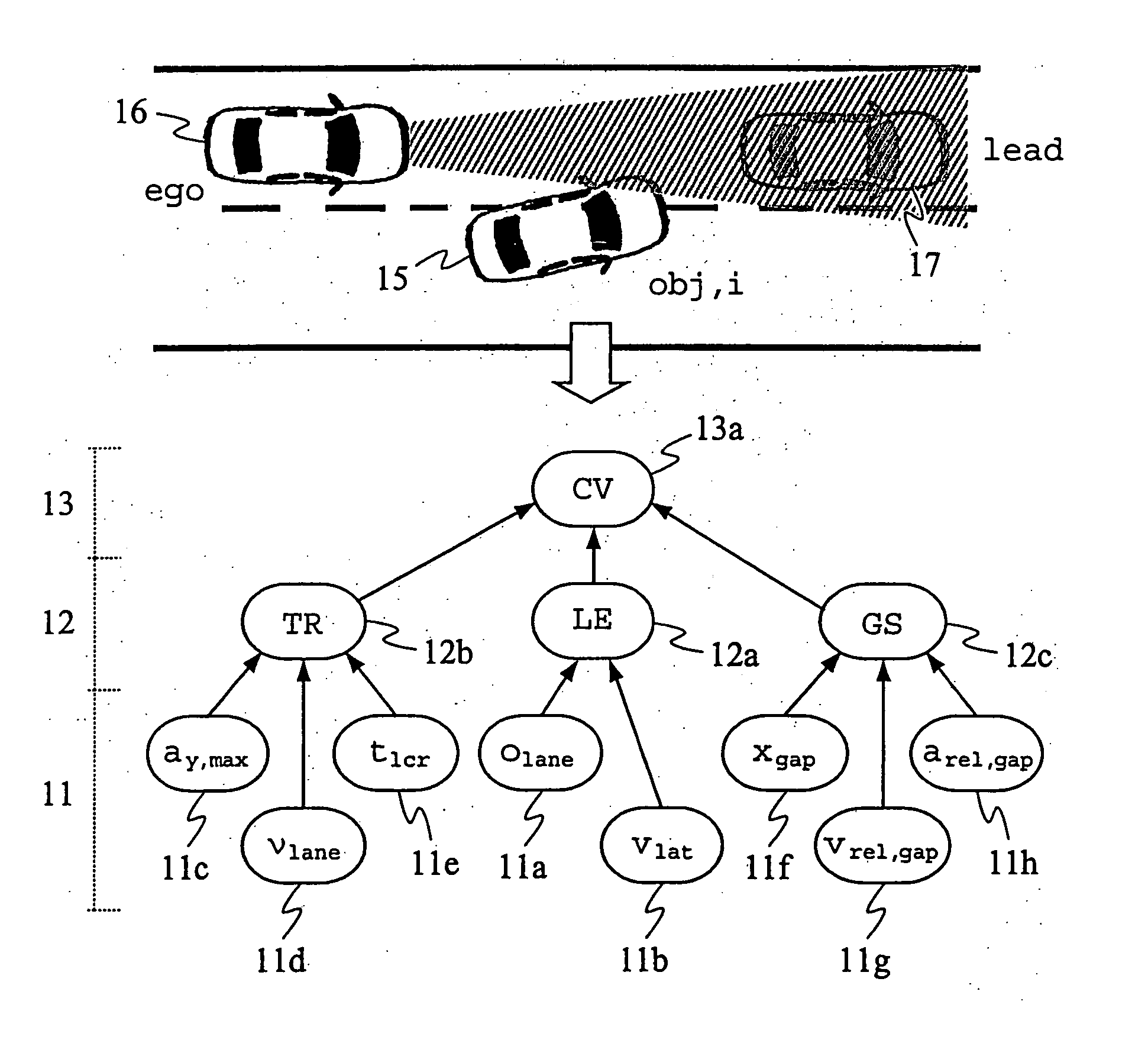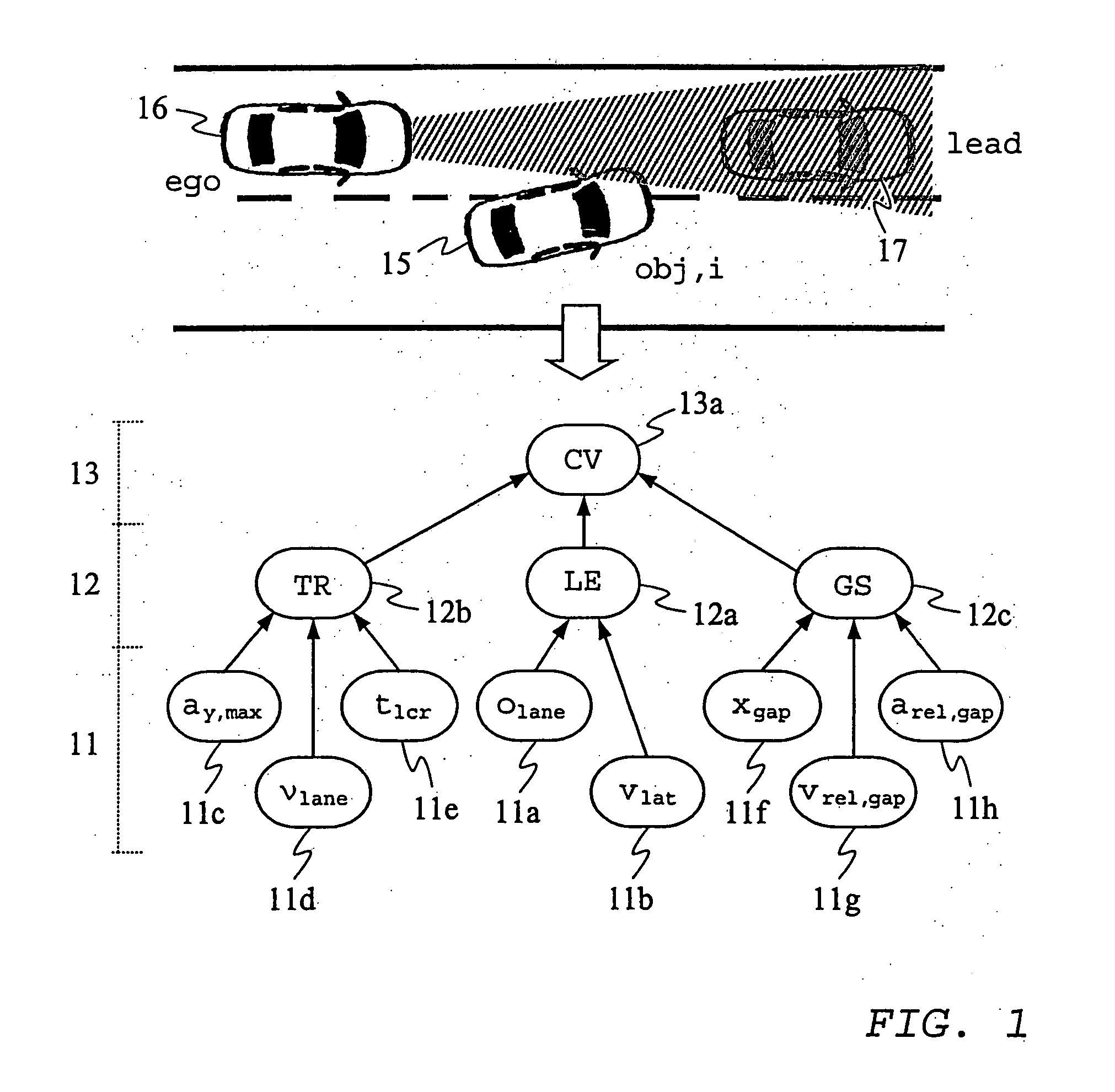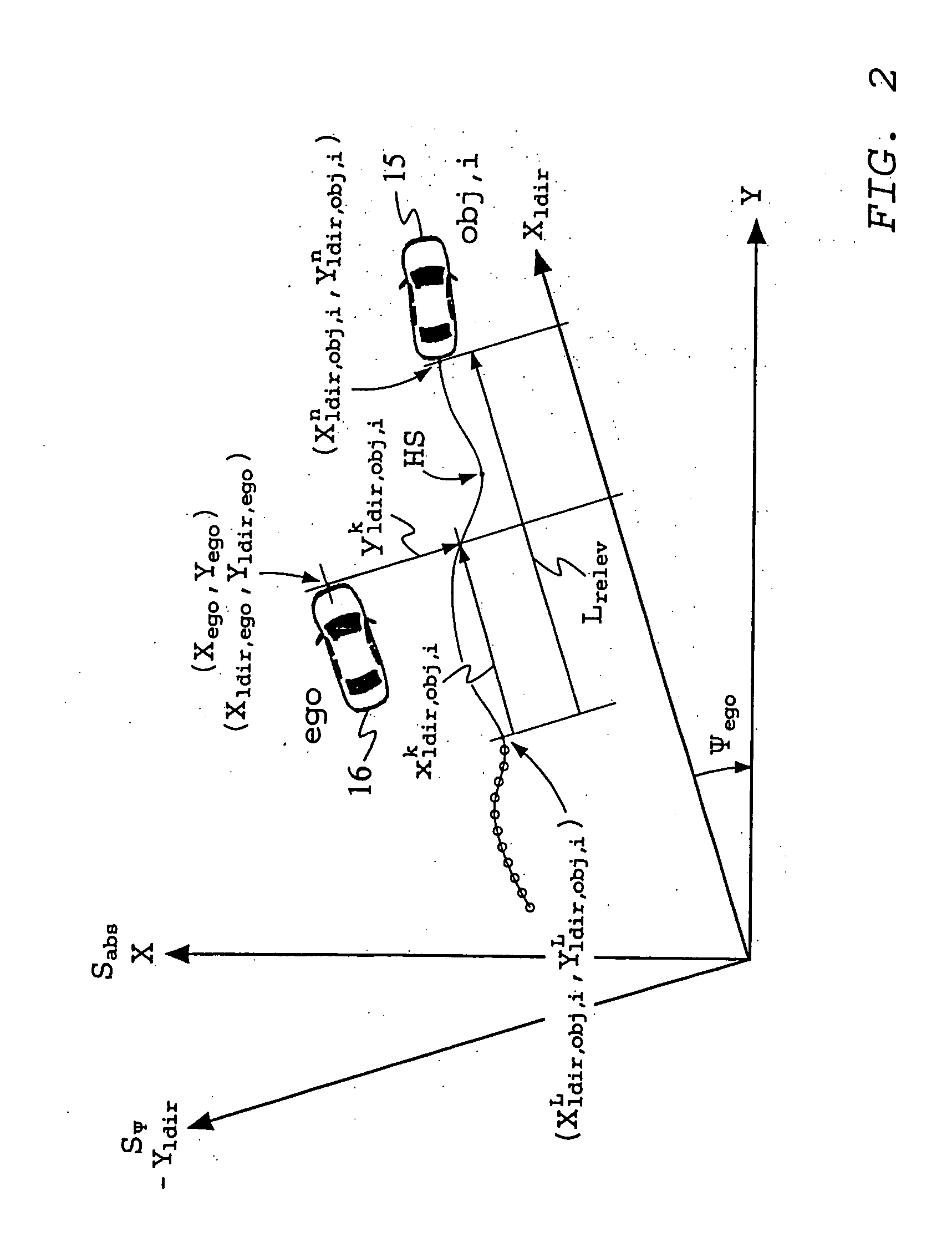Method and device for recognising lane changing operations for a motor vehicle
a technology for motor vehicles and lane changes, applied in the direction of underwater vessels, external condition input parameters, non-deflectable wheel steering, etc., can solve the problems of system-related limitations, data is generally subject to statistical variations, and conventional active cruise control systems only assist the driver in limited exten
- Summary
- Abstract
- Description
- Claims
- Application Information
AI Technical Summary
Benefits of technology
Problems solved by technology
Method used
Image
Examples
Embodiment Construction
[0023]FIG. 1 schematically shows the method according to the invention for detecting lane changing operations for a vehicle, which includes different levels of a probabilistic network, a number of observation variables which describe the lane changing behavior of the observed other vehicle 15 being described on a first level 11.
[0024] Each observation variable is assigned here a specific entry node of the probabilistic network, the determination of the observation variables in the respective entry nodes taking place by using Kalman filters for object tracking and lane detection. For this purpose, the Kalman filters use state vectors of the form
{right arrow over (x)}lane=(olane,ego, ψ, c0, c1, wlane), (1.1)
{right arrow over (x)}long,obj,i=(xobj,i, vx,ego, ax,ego, vx,obj,i, ax,obj,i), (1.2)
{right arrow over (x)}lat,obj,i=(yobj,i, vy,obj,i, ay,obj,i), (1.3)
where olane,ego represents a lateral shift of the driver's own vehicle 16 in relation to the center of the lane on the roadway...
PUM
 Login to View More
Login to View More Abstract
Description
Claims
Application Information
 Login to View More
Login to View More - R&D
- Intellectual Property
- Life Sciences
- Materials
- Tech Scout
- Unparalleled Data Quality
- Higher Quality Content
- 60% Fewer Hallucinations
Browse by: Latest US Patents, China's latest patents, Technical Efficacy Thesaurus, Application Domain, Technology Topic, Popular Technical Reports.
© 2025 PatSnap. All rights reserved.Legal|Privacy policy|Modern Slavery Act Transparency Statement|Sitemap|About US| Contact US: help@patsnap.com



